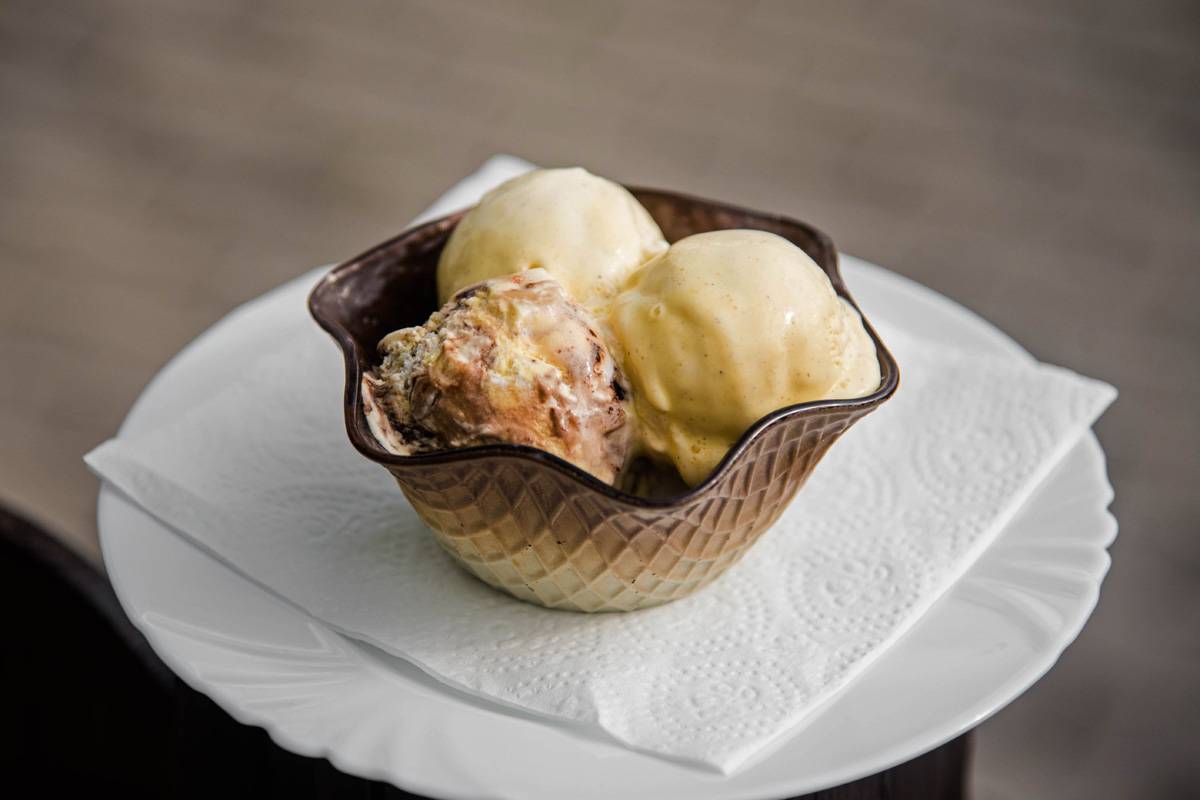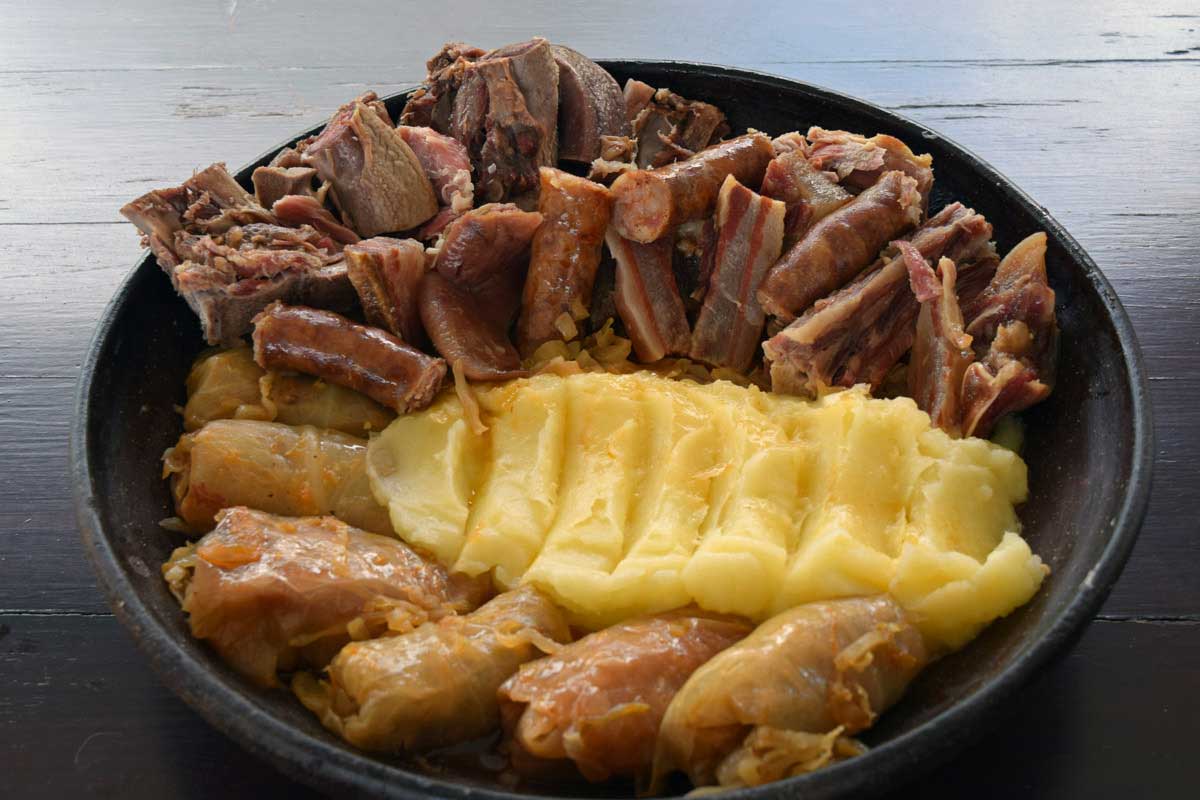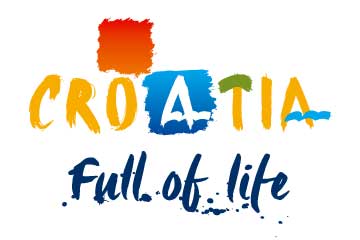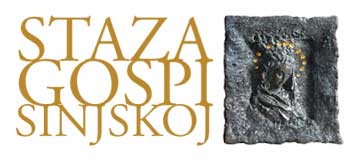Gastronomy-related interesting historical facts
 Ivana Pavičić
Ivana Pavičić The Trek Family's Pana Ice Cream
Beat hard 8 yolks and 30 dag of caster sugar until you get a frothy-white mixture. Bring 1 litre of milk to the boil, then stir the beaten mixture in it and mix without interruption over low heat until froth is gone. Cool down 5 dag of roast almonds and two bitter almonds, grind them into a powder and then stir it in the cooled mixture. Then pour the mixture into ice cube trays and leave it in a fridge.
Mention is made of the Trek family's ice cream in the report of the journey of King of Saxony Frederick August II who paid a visit to Sinj in 1838. According to the author, Sinj was among the oldest places in Dalmatia, a place in which ″residents enjoy all kind of beauties of life, and in their houses we met with exceptional cleanliness and warm hospitality, together with many a luscious dish. Written down on June 7th, 1839.″
It was also noted that the meal was served in a flower hut and that ″there were refreshments of all kinds and, strangely enough, there was ice cream so delicious that it would not disgrace even the Tomaso coffee house in Trieste.″
Coming from Switzerland, the canton of Ticino, the Trek family settled in Sinj after the Battle of Matapan in 1407. In Sinj they have been known as excellent caterers and confectioners. Mr Šime Trek's coffee house used to be in Piazza, the town main square, and it worked a full 88 years, up until 1934. It traditionally hosted the winner of the Alka together with his guests and the rest of the Alkari. There the triumphant Alkar would prepare refreshments, or infrešak, hundreds of litres of lemon squash, Pana ice cream and almond biscuits (baškotin od bajama).
Source
- Sinjska kuharica (Sinj Cookery Book), Ante Hrste

Monika Vrgoč
Interesting historical facts...
It is arguable that the oldest valuable diet- and dietary habits-related information regarding the inhabitans of Sinj and the Cetinska Krajina Region have been included in a work of the enlightener Ivan Lovrić from Sinj (Osservazioni sopra diversi pezzi del Viaggio in Dalmazia del signor abate Alberto Fortis, 1776) and the Italian travel writer and natural scientist, Abbé Alberto Fortis (Viaggio in Dalmazia/Travels into Dalmatia, 1774).
In those times, the countrymen used to live on a poor diet, which mostly included milk and milk products, especially kajmak (cream) and cheese from mišina (washed sheepskin in which cheese is preserved with brine). The most popular seasoning for polenta and especially for millet was melted butter. Over fast period, however, the food was usually seasoned with honey, water and beaten onion, and a minimum of oil was added. In winter, the countrymen used to eat pickled cabbage served with koštradina (smoked and cured mutton and goat meat), whereas over holidays they would eat roast meat with a lot of various vegetables. In the early 19th century potato was being cultivated and it enriched menus of that time to a large extent.
A special emphasis is put on hospitality of the people of the Region, the rich and the poor alike. Both Fortis and Lovrić write: ″Their hospitality is equally conspicuous among the poor as among the more opulent. The rich prepares a roasted lamb, or sheep; and the poor, with equal cordiality, gives his turkey, milk, honey, or whatever else he has.″ Mention is made of other domestic fowls, wethers, venison, cheese, sour milk, rye bread, decorated unleavened bread, etc.
In his book Sign e il suo distretto (Split, 1893), the notary public from Split Jakov Čudina (Giacomo Chudina) provided a description of life in Sinj: ″Life is full of gaiety in this charming small town, where fellows eat meat, beef of most splendid kind, luscious veal, chicks, fowls, turkeys, chicks from India, pigeons, finest venison, partridges, snipes, quails, larks, and sundry freshwater fish, crayfish, frogs, thrushes and hares; all kinds of fruit: apples, loquats, plums, strawberries, apricots, and above all, a special wine delight is finest hrvaština.
It should be said, finest of dishes is KAPORALE, or, as they call it in Slavic, arambaši.″
The wealthy possessor from Sinj Stjepan Opara – Pipe used to give a feast every year to celebrate his name day, St Stephen's Day. The regular guest in his garden was the Town Brass Band, which contributed to the festivities and entertained the guests. All of them would enjoy prosciutto (Dalmatian smoked ham), cheese, the arambaši(rolls of pickled cabbage leaves stuffed with chopped meat) served with sudžuk (homemade pork sausages) and koštradina (smoked and cured mutton and goat meat), the rafioli (traditional pastry), almond bicsuits (baškotini sa bajamima), cakes, oranges and dried figs. The drinks also should not be forgotten, including brandy (rakija), maraschino, rose brandy, homemade lemon squash as well as homemade wine.
The Alkar and the Alajčauš (the commander of the Alkari) Jozo Boko, the five-time winner of the Alka, used to give a feast for his friends in his house, whereas the rest of the townsmen feasted on 50 litres of wine in front of the house so that all of them could enjoy the celebration of his triumph.
On the eve of the First World War, the population size of the Town of Sinj was over 3 000. Sinj was at this time an important centre of comerce, traffic and catering trade in Dalmatia. Home Economics School was also active over this period, managed by Dika Marjanović-Radica who passed on incomparable cookery skills of hers to generations of Sinj housewifes but also to the future caterers.










